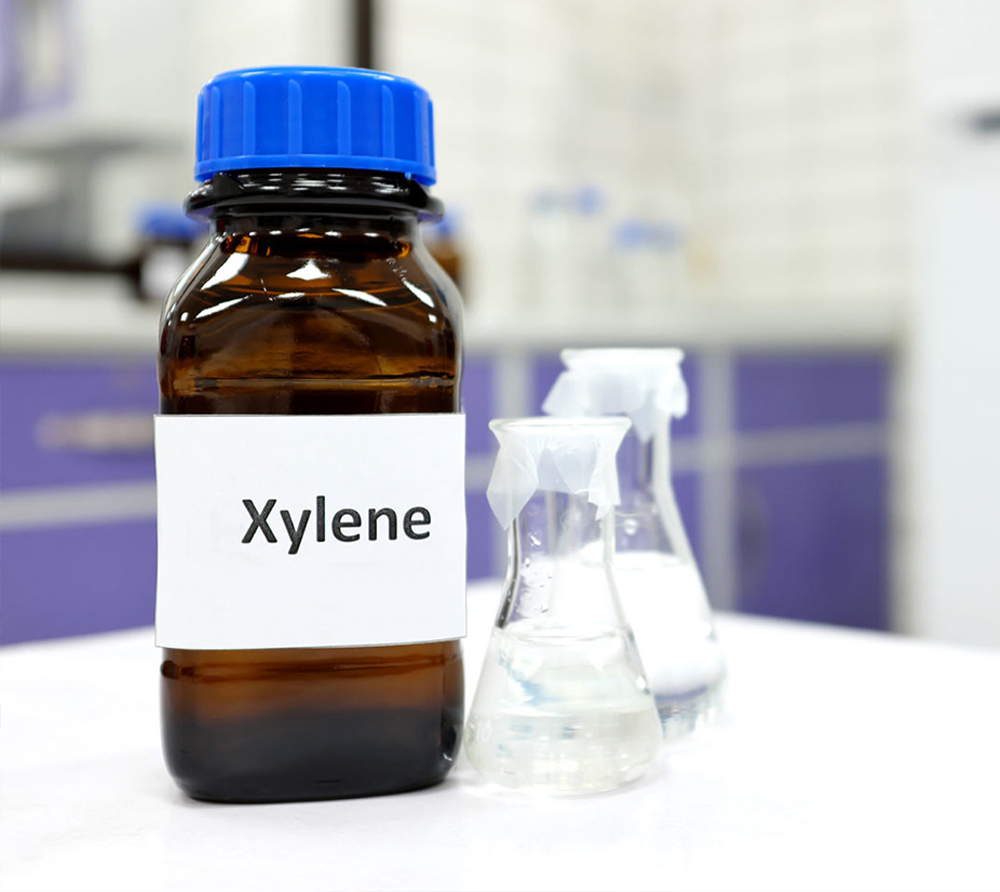Commercial or mixed xylene usually contains about 40-65% m-xylene and up to 20% each of o-xylene and p-xylene and ethylbenzene. Xylenes are released into the atmosphere as fugitive emissions from industrial sources, from auto exhaust, and through volatilization from their use as solvents. Acute (short-term) inhalation exposure to mixed xylenes in humans results in irritation of the eyes, nose, and throat, gastrointestinal effects, eye irritation, and neurological effects. Chronic (long-term) inhalation exposure of humans to mixed xylenes results primarily in central nervous system (CNS) effects, such as headache, dizziness, fatigue, tremors, and incoordination; respiratory, cardiovascular, and kidney effects have also been reported. EPA has classified mixed xylenes as a Group D, not classifiable as to human carcinogenicity.

Mixed xylenes are distributed throughout the environment; they have been detected in air, rainwater, soils, surface water, sediments, drinking water, and aquatic organisms. (1)
Xylenes are released into the atmosphere as fugitive emissions from industrial sources, from auto exhaust, and through volatilization from their use as solvents. (1)
Ambient air concentrations of mixed xylenes in urban areas of the United States range from 0.003 to 0.38 milligrams per cubic meter (mg/m³). (1)
Mixed xylenes have also been detected at low levels in indoor air; xylenes have been widely used in home use products such as synthetic fragrances and paints.
Levels of mixed xylenes in drinking water have been reported to range from 0.2 to 9.9 micrograms per liter (µg/L), with mean concentrations of less than 2 µg/L. (1)
Xylenes are released into the atmosphere as fugitive emissions from industrial sources, from auto exhaust, and through volatilization from their use as solvents. (1)
Occupational exposure to mixed xylenes may occur at workplaces where mixed xylenes are produced and used as industrial solvents. (1)
Xylene exposure may be to any of the three isomers or to mixtures of the isomers. (1)
Exposure to mixed xylenes may be determined by measuring the breakdown products of mixed xylenes in the urine or by measuring levels of xylene in blood or exhaled breath. (1)
m-, o-, and p-Xylene are the three isomers of xylene; commercial or mixed xylene usually contains about 40-65% m-xylene and up to 20% each of o- and p-xylene and ethylbenzene. (1)
Mixed xylenes are colorless liquids that are practically insoluble in water and have a sweet odor. (1)
The odor threshold for m-xylene is 1.1 ppm. (4)
The chemical formula for mixed xylenes is C8H10, and the molecular weight is 106.16 g/mol. (1)
The vapor pressure for mixed xylenes is 6.728 mm Hg at 21 °C, and the log octanol/water partition coefficient (log Kow) is 3.12 - 3.20. (1)
The product is warranted to meet the values specified below. Actual values may deviate within the established reproducibility of the test method. In case of dispute, the test methods specified below, or their equivalent, will be used in conjunction with ASTM D 3244, "Standard Practice for Utilization of Test Data to Determine Conformance with Specifications."
| Appearance, Visual | Pass |
| Nitration Grade Xylene, ASTM D 843-95 | Complies |
| Aromatics Content, ASTM D 2306, Vol. % | 99 Min. |
| Benzene Content, GCMS, (ppm) | 300 Max. |
| Color | -- |
| ASTM D 156, Saybolt Units | 30 Min. |
| ASTM D 1209, Platinum-Cobalt Scale | 10 Max |
| Distillation, ASTM D 850 | -- |
| IBP, ° C | 137 Min |
| DP,° C | 143 Max. |
| Range,° C | 5 MAx. |
| Specific Gravity, ASTM D 4052 | -- |
| @15.6° /15.6° C | 0.865 - 0.875 |